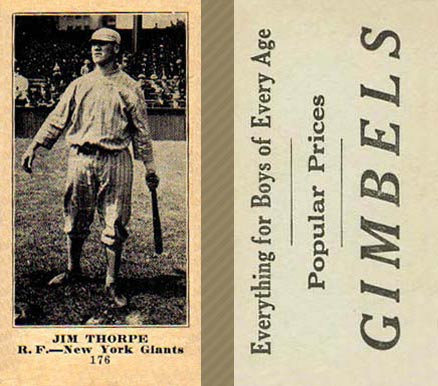Within sight of the Reichstag ruins and 700 yards from the brand-new Berlin Wall dividing the city, Stanley Kramer’s JUDGMENT AT NUREMBERG had its world premiere a half-century ago on December 14, 1961 before a stunned, silent audience of prominent Germans – and 300 reporters from 26 countries. “No applause, no sobs, no tentative laughs to relieve the tension,” reported the New York Herald Tribune. Few showed up for the lavish post-party.
In a century marked with unprecedented conflict and a year, 1961, that often felt like the edge of Armageddon, JUDGMENT AT NUREMBERG marks an important pivot after which popular feeling, at least in this country, began to face seriously the horrors of what would soon come to be generally called “the Holocaust.”
The sensational trial of Adolf Eichmann on 15 counts, including crimes against humanity, had concluded in Jerusalem a week before with a guilty verdict. The death sentence was read out the day after the movie’s premiere, December 15. By Christmas commentators were suggesting that the Nuremburg trials were the legal and moral precedent that “authorized brave little Israel” to hunt down and prosecute Eichmann. Hannah Arendt had reported on the trial for The New Yorker and the last four words of the subtitle of her subsequent book, Eichmann in Jerusalem: A Report on the Banality of Evil, would become a catch phrase of history.
Preceding the film’s premiere had been a year of stunning Cold War brinksmanship. In April the Bay of Pigs debacle kicked off John Kennedy’s first year as U.S. president. Encouraged by this apparent incompetence of the American leader, Soviet leader Khrushchev bullied and harangued Kennedy at their June meeting in Vienna, threatening war if his demands to alter the status of Berlin were not met. All summer the world tensed itself for war. By August 17 the Berlin Wall was done, built in five days. September 1 U.S. seismographs discovered that the Soviets had resumed testing of major nuclear devices.
Meanwhile, director Kramer, screenwriter Abby Mann and United Artists were working on JUDGMENT AT NUREMBERG. Shooting took place after two weeks in February of rehearsals at the Revue Studio in Hollywood and then moved to the site of the original trials in the Palace of Justice in Nuremburg and to the still-rubble-strewn streets of Berlin.
The meticulous Kramer was known for “message” pictures (THE DEFIANT ONES, ON THE BEACH, INHERIT THE WIND), but JUDGMENT AT NUREMBERG was made with a particular passion and purpose. Since the end of World War II in 1945, a former U.S ally, the USSR, had become an enemy. And a former enemy, Germany – at least the Western part of the divided country -- was an essential Cold War ally in the fight against communism. As a result, it was considered "a breach of good manners in polite society,” as the film’s screenwriter Abby Mann recalled, to bring up the Nazi extermination of the Jews for fear of offending Germany.
The Nuremburg war crime trails had been a first in international jurisprudence, establishing the legal concept of crimes against humanity. The first and best known was the trial of key Nazi leaders, including Rudolf Hess and Albert Speer, from 1945 to 1946. JUDGMENT AT NUREMBERG was based on the third trial, in 1947, that prosecuted 16 functionaries in the German judicial system (the script condensed the number down to four). When Mann discovered in the late 1950s that none of the jurists convicted (most of them were found guilty, some given life sentences) were still in prison, he wondered if the same attitude that allowed the Nazis to come to power was somehow related to their release (Arendt would speculate along similar lines during the Eichmann trial). That question inspired Mann’s original 1959 Playhouse 90 teleplay.
The show was a sensation. Mann claimed to be the first, both in the TV and film versions, to show documentary footage of concentration camps to a broad audience. “Nobody wanted to remember the camps,” he recalled at the time. The American Gas Company, a sponsor of the teleplay, insisted that the word “gas” be deleted from the script with the result, cracked one reviewer, that “Six million Jews died in . . . chambers.”
Kramer figured the only way the movie version would fly at the box office was to load it up with stars. The New Yorker would call it “a judicial GRAND HOTEL.” Marlene Dietrich was the “good German,” Spencer Tracy the crusty American judge, Maximilian Schell would win an Oscar for his portrayal of the defense attorney. Judy Garland, fragile, was in her first film in five years (on April 23, 1962, she would give her great Carnegie Hall concert). Montgomery Clift, drinking heavily, worked for free, his face wrecked by a car crash. Other stars: Richard Widmark, a very young William Shatner, and Burt Lancaster as Emil Janning, the Nazi judge who gives the final indictment of his own culture (‘Where were we? ... Were we deaf, dumb and blind?”).
The movie “opened and closed” that night in Berlin and would not be released in Germany until after the mini-series HOLOCAUST was a hit on German television 20 years later. Former United Artists executive and biographer Steven Bach would call JUDGMENT AT NUREMBERG “one of the last of its sort before the movie industry’s capitulation to television made such subject matter impossible except on television.”
It wasn't a great movie, but it was an effective one. It was made to remind the world, as The New Yorker summed it up at the time, “of nothing less than the degree of our accountability as members of the human race, for the life and well-being of every other member of the race.”




















